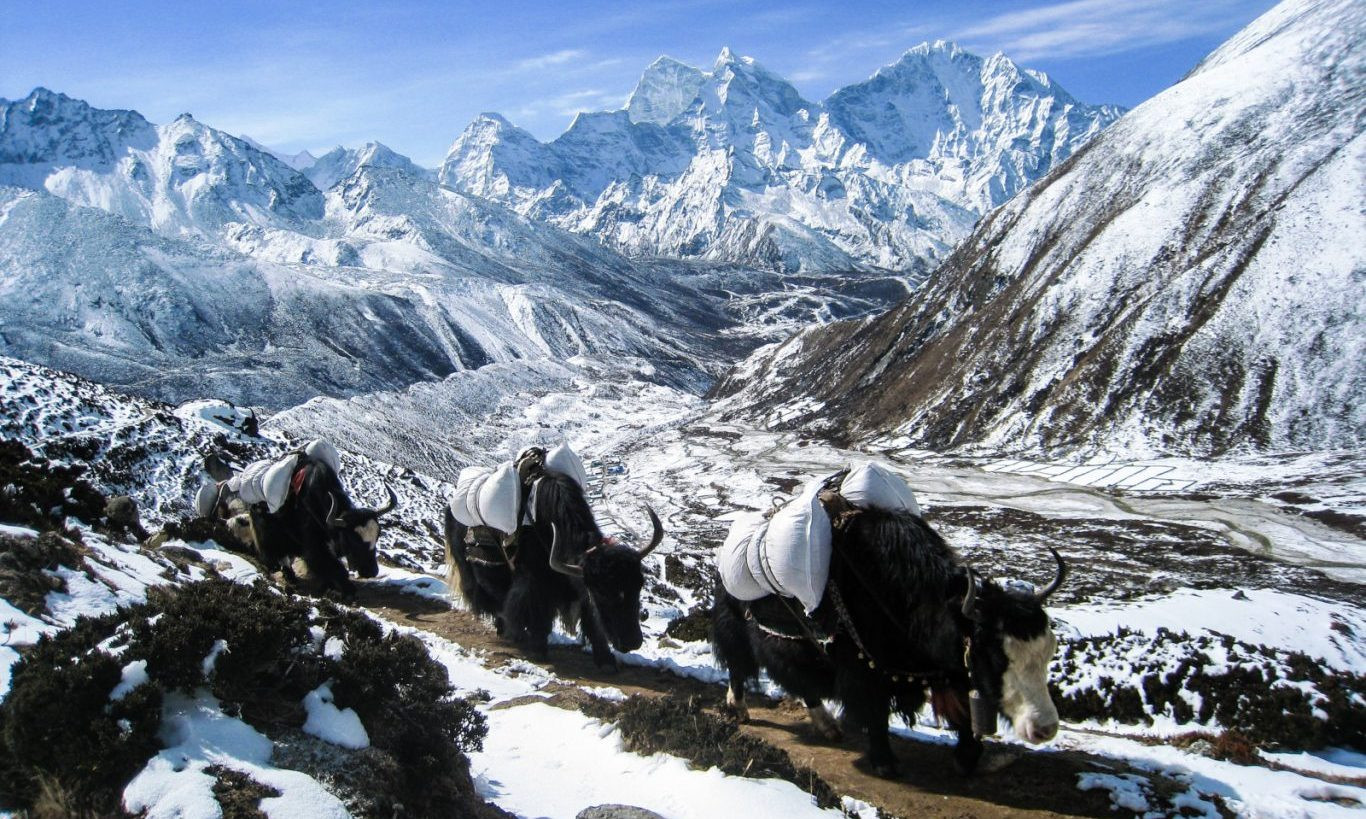Thorong La Pass Trek (Annapurna Region)
The Thorong La Pass Trek in the Annapurna Region is one of the most popular and exhilarating high-altitude treks in Nepal, offering adventurers a unique blend of breathtaking scenery, diverse cultures, and challenging trekking conditions. It is a key component of the larger Annapurna Circuit, often hailed as one of the greatest treks in the world.
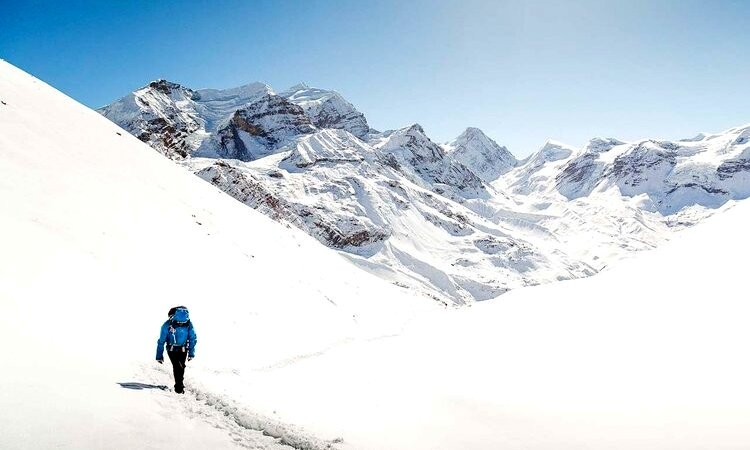
Key Features of the Thorong La Pass Trek
-
Elevation: The Thorong La Pass itself is situated at a formidable height of 5,416 meters (17,769 feet), making it one of the highest trekking passes globally.
-
Duration: The trek typically takes about 12 to 15 days to complete, depending on the chosen itinerary and pace.
-
Route: The journey typically begins in Besisahar or Bhulbhule in the Marsyangdi River valley and progresses through diverse landscapes, from lush sub-tropical forests and terraced rice fields to alpine meadows and high desert regions. The trail ascends to the west, eventually crossing the Thorong La Pass and descending into the Kali Gandaki Gorge, the deepest gorge in the world.
-
Cultural Exposure: Trekkers experience a rich tapestry of cultures along the route, including communities of Gurung, Manangi, and Thakali people, each with distinct customs and traditions.
-
Scenic Highlights: The trek offers unparalleled views of majestic peaks such as Annapurna, Dhaulagiri, Manaslu, Gangapurna, and Tilicho Peak. The diverse ecosystems and landscapes—from lush paddy fields to stark, rocky high-altitude deserts—provide constantly changing backdrops that astonish and delight.
Challenges and Preparations
-
Altitude Sickness: Due to the high elevations, trekkers must take precautions against altitude sickness, which can include symptoms ranging from mild headaches to severe acute mountain sickness. Proper acclimatization days are essential.
-
Physical Fitness: The trek is demanding and requires good physical fitness. Preparation should include cardiovascular training as well as strength and endurance exercises.
-
Weather Conditions: Weather can be variable and extreme, especially at higher altitudes. Trekkers should be prepared for sudden weather changes and pack accordingly.
-
Permits and Regulations: Trekking in the Annapurna region requires several licenses, such as the Annapurna Conservation Area Permit (ACAP) and the Trekkers’ Information Management System (TIMS) card. These can be arranged through a trekking agency.
The Thorong La Pass Trek is a remarkable adventure that promises both natural and cultural riches. For those prepared to face its challenges, the trek offers one of the most rewarding experiences in the Himalayas.
Everest Three High Pass Trek (Everest Region)
The Everest Three High Pass Trek in the Everest Region is a challenging and thrilling adventure for serious trekkers seeking to explore the full grandeur of the Himalayas. This trek takes adventurers across three of the highest passes in the world, providing unmatched views of iconic peaks and a deep immersion into the high-altitude landscapes of Nepal.
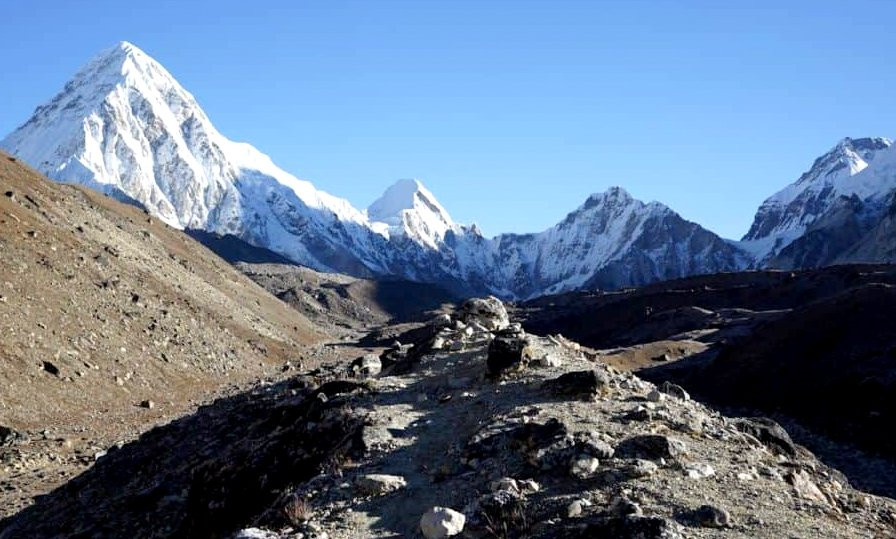
Key Features of the Everest Three High Pass Trek
-
Passes: The trek includes Renjo La (5,360 meters), Cho La (5,420 meters), and Kongma La (5,535 meters), each offering distinct challenges and spectacular panoramic views.
-
Duration: This comprehensive trek typically takes about 18 to 21 days, depending on the pace and itinerary preferences.
-
Route: Starting from the famous Lukla airstrip, the route takes trekkers through the Sagarmatha National Park, showcasing vibrant Sherpa villages like Namche Bazaar and tranquil valleys laden with ancient monasteries and fluttering prayer flags. The trek includes visits to Everest Base Camp and the picturesque Gokyo Lakes.
-
Cultural Exposure: Trekkers will experience firsthand the vibrant culture of the Sherpa people, visit remote monasteries, and learn about the local traditions and Buddhist practices that are integral to daily life in these high-altitude communities.
-
Scenic Highlights: Besides close-up views of Mount Everest, the trek offers vistas of other magnificent peaks such as Lhotse, Makalu, and Cho Oyu. The dramatic landscapes range from lush valleys to glacial moraines and icy glaciers, offering some of the most photogenic opportunities in the Himalayas.
Challenges and Preparations
-
Altitude Sickness: As the trek involves crossing three high-altitude passes, the risk of altitude sickness is significant. Adequate acclimatization days and a careful ascent rate are vital.
-
Physical Fitness: The trek is physically demanding. Extensive cardiovascular conditioning, coupled with strength and endurance training, is essential for preparation.
-
Weather Conditions: The high altitude can lead to severe weather conditions, including sudden temperature drops and heavy snowfall, making it crucial to be well-prepared with the right gear.
-
Permits and Regulations: Trekkers need to obtain a Sagarmatha National Park permit and a TIMS (Trekkers’ Information Management System) card. These are typically handled by trekking agencies.
The Everest Three High Pass Trek is a demanding but immensely rewarding expedition that tests a trekker's limits and offers some of the most spectacular insights into the natural beauty and cultural richness of the Everest region. It’s a journey that remains etched in memory long after the trek is completed.
Larkya Pass Trek (Manaslu Region)
The Larkya Pass Trek, also known as the Manaslu Circuit Trek, is a captivating journey through the remote and pristine landscapes of the Manaslu Region in Nepal. This trek is renowned for its stunning natural beauty, cultural authenticity, and the formidable Larkya La Pass, making it a cherished route for those looking to explore off the beaten path.
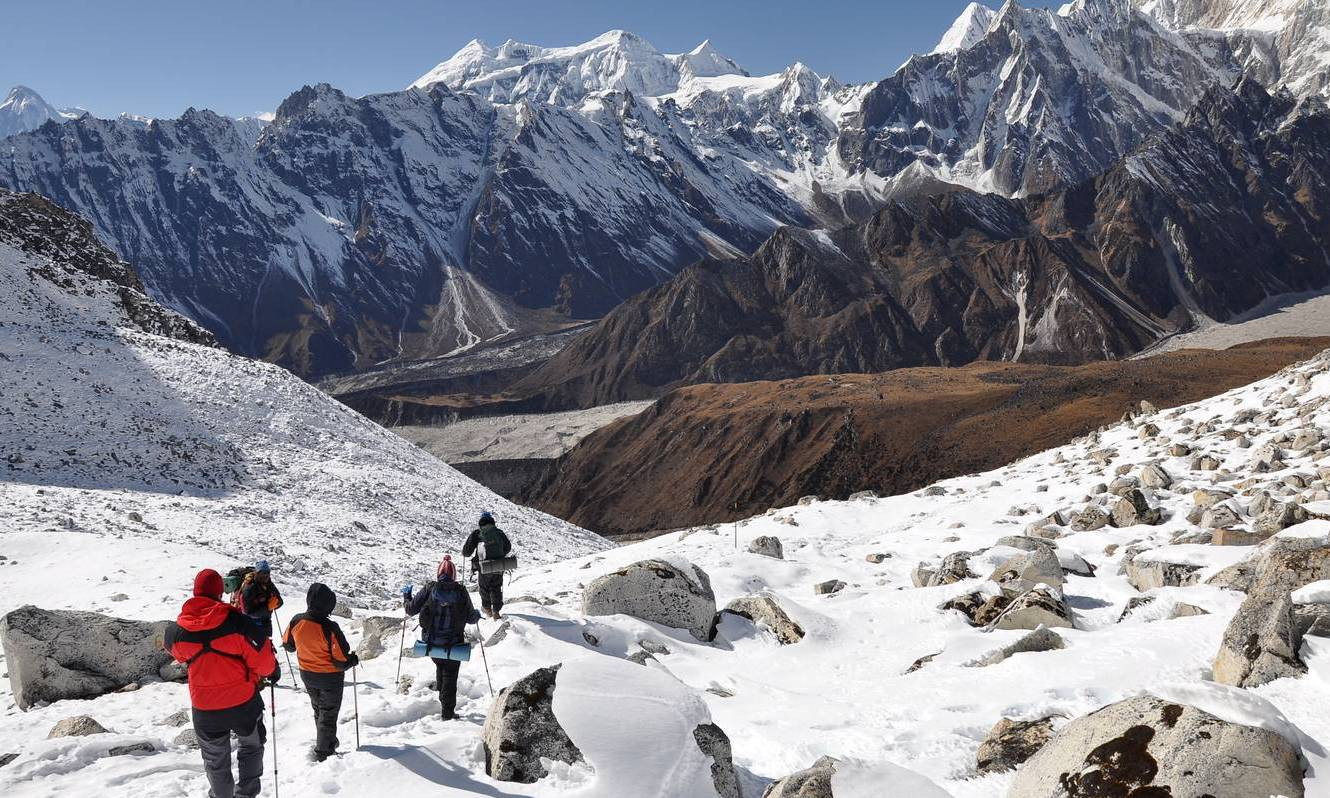
Key Features of the Larkya Pass Trek
-
Elevation: Larkya La, the highest point of the trek, reaches an elevation of 5,106 meters (16,752 feet).
-
Duration: The trek typically spans 14 to 18 days, depending on the chosen route and pace.
-
Route: The trek begins at Soti Khola, progresses through the Budhi Gandaki Valley, and winds its way up to the Larkya La Pass. The journey offers a blend of rich cultural experiences and dramatic high-altitude landscapes, culminating in the challenging pass itself before descending to Bhimthang and eventually to Dharapani.
-
Cultural Exposure: The trail passes through various ethnic villages, including those inhabited by Gurungs and Bhutias, offering trekkers a glimpse into the traditional lifestyles that have remained largely unchanged for centuries.
-
Scenic Highlights: Spectacular views of Manaslu, the eighth-highest mountain in the world, as well as Himalchuli, Ngadi Chuli, and Ganesh Himal. The diverse terrain ranges from lush subtropical forests to the harsh, barren landscape above the snow line.
Challenges and Preparations
-
Altitude Sickness: The significant altitude of Larkya La Pass means that altitude sickness is a concern. Proper acclimatization days are included in the itinerary to help mitigate this risk.
-
Physical Fitness: This is a physically demanding trek that requires good fitness. Prior hiking experience at high altitudes is beneficial.
-
Weather Conditions: The trek can face a variety of weather conditions, especially as it nears the pass. Trekkers must be prepared for potential cold and snowy conditions.
-
Permits and Regulations: The Manaslu region is a restricted area. Trekkers need a special Manaslu Conservation Area Permit (MCAP) and an Annapurna Conservation Area Permit (ACAP), as well as a TIMS card, all of which can be arranged by a registered trekking agency.
The Larkya Pass Trek is a less frequented path that offers a more solitary trekking experience compared to the more crowded trails like those in the Everest or Annapurna regions. It not only challenges trekkers physically but also enriches them with profound cultural insights and close-up encounters with some of the Himalayas' most majestic peaks. This trek is a true adventure for those looking to explore deep into the heart of the Himalayas.
Ganja La Pass Trek (Langtang Region)
The Ganja La Pass Trek in the Langtang Region is an exhilarating and challenging high-altitude trek that offers a remarkable adventure through one of Nepal's most beautiful and diverse areas. This trek is less traveled compared to other popular routes, providing a more secluded and intimate experience with nature and local culture.
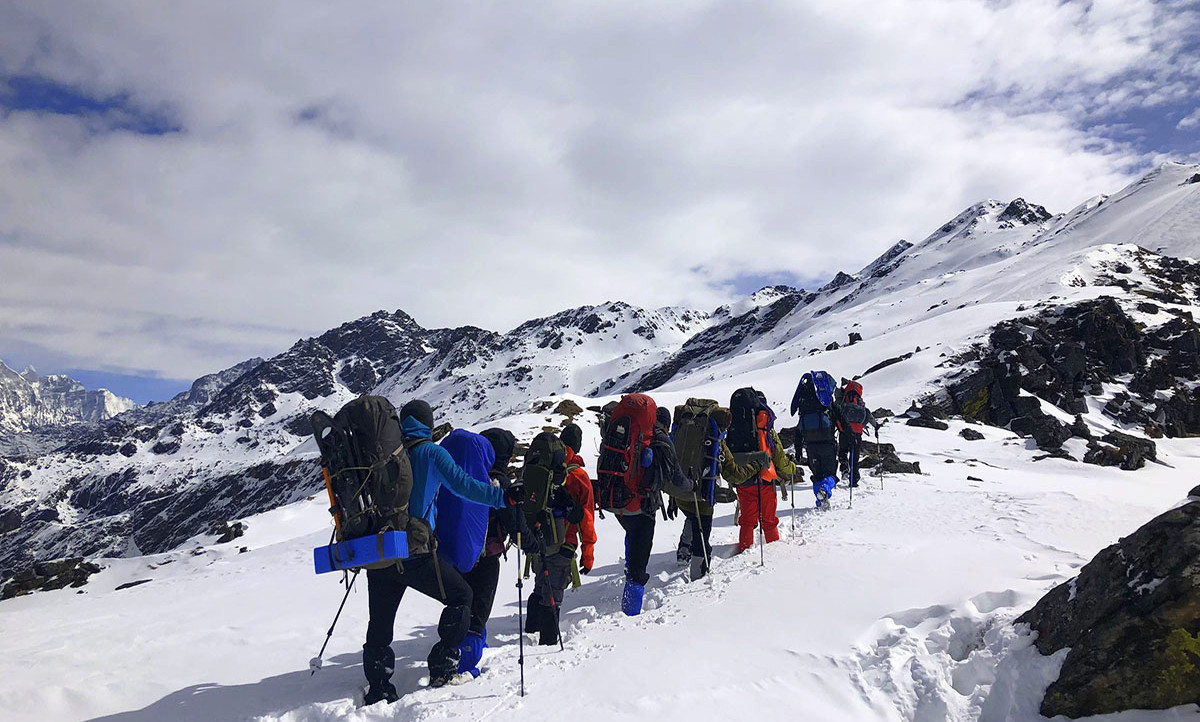
Key Features of the Ganja La Pass Trek
-
Elevation: The Ganja La Pass reaches an altitude of 5,122 meters (16,800 feet).
-
Duration: Typically, the trek spans about 12 to 14 days, depending on the chosen itinerary and pace of the trekking group.
-
Route: The journey begins in Syabrubesi, a small village that serves as the common gateway to the Langtang Valley. The trek progresses through the Langtang National Park with its lush forests and diverse wildlife, up to Kyanjin Gompa, a prominent monastery and village. From there, trekkers make the challenging ascent to Ganja La Pass, which offers dramatic panoramic views of the Himalayas.
-
Cultural Exposure: The trek offers insights into the lives of the local Tamang and Sherpa communities, whose traditions and Buddhist practices are an integral part of the region.
-
Scenic Highlights: Stunning views of Langtang Lirung, Dorje Lakpa, and other Himalayan peaks are constant throughout the trek. The region's varied landscape transitions from green forests to rugged rock and ice, showcasing the dramatic changes in geography that characterize the Himalayan region.
Challenges and Preparations
-
Altitude Sickness: Given the high altitude of the pass, altitude sickness is a significant risk, and proper acclimatization is essential. Trekkers should be aware of the symptoms and take preventive measures.
-
Physical Fitness: The trek is demanding, with steep climbs and potentially challenging weather conditions, requiring good physical fitness and stamina.
-
Weather Conditions: Weather in the high mountain areas can be unpredictable, with possibility of sudden snow and temperature drops, especially near the pass. Proper gear and preparation are crucial.
-
Permits and Regulations: Trekkers need a Langtang National Park permit and a TIMS (Trekkers' Information Management System) card, which can be obtained through a registered trekking agency.
The Ganja La Pass Trek is a fantastic option for those looking to explore a less commercialized part of Nepal, offering a blend of high-altitude trekking challenges and rich cultural interactions. It's an ideal trek for experienced adventurers seeking to test their limits and enjoy the serene beauty of the Himalayas.
Kang La Pass (Annapurna Region)
The Kang La Pass Trek in the Annapurna Region is an exceptional and less-trodden path that leads adventurers into the remote Nar Phu Valley, known for its rugged landscapes and ancient Tibetan culture. This trek is perfect for those who seek solitude and the thrill of exploring hidden corners of the Himalayas.
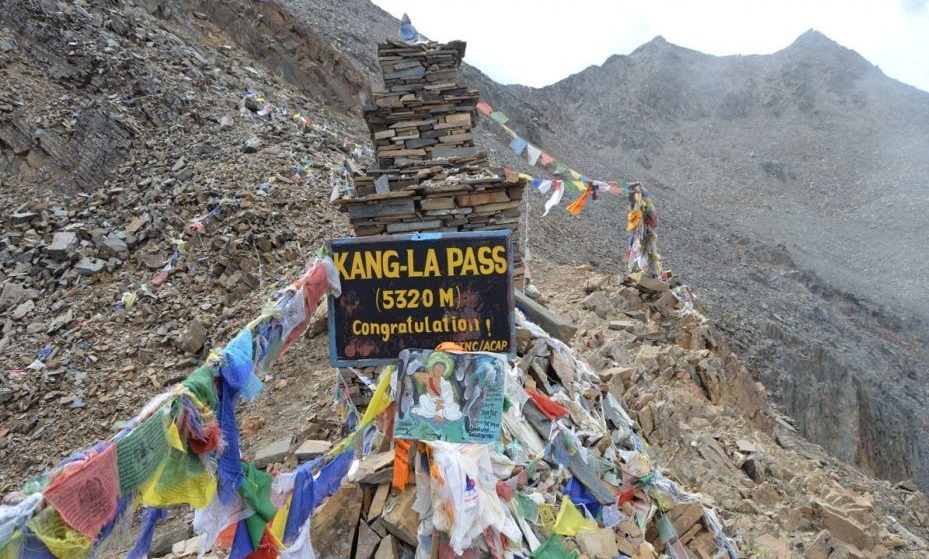
Key Features of the Kang La Pass Trek
-
Elevation: Kang La Pass itself sits at an elevation of 5,320 meters (17,454 feet).
-
Duration: The trek usually lasts about 18 to 20 days, depending on the chosen route and pace.
-
Route: The trek typically starts from Jagat, following a route similar to the Annapurna Circuit until branching off towards the Nar Phu valley. It involves navigating through remote villages, ancient monasteries, and rugged terrain, culminating in the challenging ascent to Kang La Pass, which offers spectacular views of the Annapurna massif and the surrounding peaks.
-
Cultural Exposure: The trek provides a unique opportunity to experience the lifestyle and customs of the Nar and Phu communities, whose traditions have remained largely untouched by modern influences. These villages showcase medieval Tibetan culture in its purest form, with stone houses and ancient monasteries that are integral to the community.
-
Scenic Highlights: The landscape is dramatically varied, featuring deep canyons, high-altitude grazing settlements, and close-up views of Annapurna II, Gangapurna, and Tilicho Peak. The trek provides a sense of isolation and untouched beauty that is becoming increasingly rare in the more frequented trails.
Challenges and Preparations
-
Altitude Sickness: As with any high-altitude trek, the risk of altitude sickness is significant. Acclimatization days are necessary, and trekkers should monitor their health closely throughout the trek.
-
Physical Fitness: The trek is challenging, with long days of walking in often difficult terrain, requiring a high level of fitness and endurance.
-
Weather Conditions: Weather can be a major challenge, particularly when crossing the pass, where conditions can change rapidly. Proper gear and preparation are essential to ensure safety.
-
Permits and Regulations: Since the Nar Phu Valley lies in a restricted area of the Annapurna Conservation Area, special permits are required to enter. These include the Annapurna Conservation Area Permit (ACAP) and a Restricted Area Permit (RAP), both of which can be arranged by a registered trekking agency.
The Kang La Pass Trek offers a profound adventure into one of Nepal's most secluded regions, providing a deep connection with nature and exposure to ancient cultures. It is an ideal choice for seasoned trekkers looking to escape the more crowded routes and delve into the mysteries of the Himalayan wilderness.
How to be prepared for the High Pass Trek?
Preparing for a high pass trek in the Himalayas, such as those in Nepal, requires careful planning and consideration to ensure safety, enjoyment, and success. These treks often involve crossing passes at altitudes exceeding 5,000 meters (16,400 feet), where the air is thin, the terrain is challenging, and the weather can be severe. Here’s how to effectively prepare:
Physical Fitness
-
Cardiovascular Training: Begin your preparation months in advance with regular cardiovascular exercises such as running, cycling, and swimming to improve your endurance.
-
Strength Training: Focus on building leg strength through exercises like squats, lunges, and step aerobics. Core strength is also crucial for balancing and carrying your pack.
-
Hiking Practice: If possible, engage in regular hiking, progressively increasing the distance and altitude to get your body accustomed to similar conditions.
Acclimatization
-
Gradual Ascent: Plan your trek itinerary to include days specifically for acclimatization. This means staying at a certain altitude to let your body adjust to the decreased oxygen levels.
-
Hydrate: Drinking plenty of water helps mitigate the effects of altitude sickness.
-
Know the Symptoms: Be aware of altitude sickness symptoms—headache, nausea, dizziness—and take them seriously by communicating with your guide.
Gear and Clothing
-
Appropriate Footwear: Invest in high-quality, durable, and waterproof trekking boots that are well broken in before the trek.
-
Layered Clothing: Weather conditions can change rapidly, so layered clothing is essential. Include thermal underwear, fleece jackets, a down jacket, and waterproof outer layers.
-
Specialized Equipment: Depending on the trek, you may need additional gear such as ice axes, crampons, and gaiters. A sturdy backpack, sleeping bag rated for low temperatures, and a headlamp are also essential.
Navigation and Communication Tools
-
Maps and GPS: Carry detailed maps of the area or a GPS device. Although guides are invaluable, having your resources is a good backup.
-
Local SIM Card: For communication in areas with cellular coverage, consider obtaining a local SIM card if your phone is compatible.
Insurance
- Travel Insurance: Ensure that your travel insurance covers high-altitude trekking and possible helicopter evacuation in case of severe health issues.
Local Knowledge and Support
-
Hiring a Guide: Employing a local guide not only supports the local economy but also enhances your safety and experience. Guides can provide insights into the local culture and natural environment that you might otherwise miss.
-
Porters: If the trek will be particularly long or involved, consider hiring porters to carry your main pack, allowing you to focus on the trek with just a day pack.
Mental Preparation
-
Research: Read about other trekkers’ experiences, familiarize yourself with the route's challenges, and understand the cultural norms of the region.
-
Positive Mindset: Mental endurance is as important as physical strength. Be prepared for challenging days, and maintain a positive, resilient attitude.
Diet and Health
-
Balanced Diet: In the months leading up to the trek, eat a balanced diet rich in iron, protein, and carbohydrates.
-
Medical Check-Up: Get a full medical check-up to ensure you don’t have underlying health issues that could be exacerbated by high-altitude exposure.
By thoroughly preparing for your high pass trek, you significantly increase your chances of a rewarding and enjoyable experience, minimizing potential risks and discomforts.
Are high pass treks risky?
High-pass treks, especially those in regions like the Himalayas, inherently come with several risks due to the challenging terrain, extreme weather conditions, and high altitudes involved. Understanding these risks can help trekkers prepare adequately and take necessary precautions. Here are the main risks associated with high-pass treks:
-
Altitude Sickness: Altitude sickness, or acute mountain sickness (AMS), is one of the most significant risks on high-pass treks. It occurs when you cannot acclimatize to the decreasing oxygen levels at higher altitudes. Symptoms can range from mild headaches and nausea to severe, life-threatening conditions like High Altitude Pulmonary Edema (HAPE) or High Altitude Cerebral Edema (HACE). Proper acclimatization, awareness of symptoms, and a gradual ascent can help manage this risk.
-
Harsh Weather Conditions: High altitudes are synonymous with unpredictable weather, which can change rapidly within a few hours. Trekkers might face severe conditions including heavy snowfall, ice, strong winds, and sudden temperature drops, all of which can increase the risk of hypothermia or frostbite.
-
Challenging Terrain: The terrain on high pass treks can be rugged and treacherous, involving steep climbs, rocky paths, and potentially slippery snow-covered or icy trails. This terrain increases the risk of accidents, including falls and injuries such as sprains or fractures.
-
Remote Locations: Many high-pass treks are in remote areas far from medical facilities or emergency services. This isolation can complicate rescue and medical treatment in case of an emergency, making self-sufficiency and preparation crucial.
-
Physical Exhaustion: The combination of long trekking days, steep ascents, and thin air can lead to physical exhaustion, even in well-prepared trekkers. This fatigue can impair judgment and physical ability, increasing the likelihood of accidents.
Mitigating the Risks
-
Preparation and Training: Being physically and mentally prepared is crucial. Engage in cardio and strength training, and include hikes at elevation if possible before your trek.
-
Acclimatization: Follow a well-planned itinerary that allows for gradual acclimatization to altitude, including rest days.
-
Guide and Porter Services: Hiring experienced guides and porters not only provides employment to local communities but also enhances your safety. Guides are familiar with the terrain and weather patterns and can make critical decisions in emergencies.
-
Appropriate Gear: Equip yourself with the necessary trekking gear, including proper boots, layers of clothing to manage changing temperatures, a reliable sleeping bag, and, if required, technical gear like ice axes and crampons.
-
Travel Insurance: Ensure you have insurance that covers high-altitude trekking and potential emergency evacuation.
- Stay Informed: Keep up-to-date with weather forecasts and conditions, and listen to the advice of guides and locals who know the area.
By recognizing the inherent risks and preparing accordingly, trekkers can significantly mitigate the dangers associated with high-pass treks and enjoy a rewarding experience exploring some of the most stunning and remote landscapes on earth.
Important Tips for High Pass Trekking in Nepal
High-pass trekking in Nepal offers some of the most breathtaking landscapes in the world but also poses significant challenges due to its altitude, terrain, and weather conditions. Here are some important tips to ensure a safe and enjoyable trekking experience:
Acclimatize Properly
-
Gradual Ascent: Increase your altitude slowly to give your body time to adjust to the lower levels of oxygen.
-
Rest Days: Incorporate acclimatization days into your itinerary, especially before crossing high passes.
Train Adequately
-
Cardiovascular Fitness: Engage in regular cardio exercises like running, cycling, or swimming several months before your trek.
-
Strength Training: Focus on building strength, particularly in your legs, back, and core to handle the rigors of trekking.
-
Altitude Training: If possible, train at high altitudes or use altitude training masks to prepare your body.
Hire Experienced Guides and Porters
- Employing knowledgeable local guides and porters can enhance your trekking experience. They offer valuable insights, help manage logistical aspects, and ensure safety.
Pack Smart
-
Essential Gear: Pack the right gear including a good quality backpack, a sturdy pair of trekking boots, a sleeping bag suitable for low temperatures, and layered clothing for varying weather conditions.
-
Navigation Tools: Carry detailed maps, a compass, and a GPS device.
Stay Hydrated and Eat Well
-
Water: Drink plenty of water to stay hydrated. Use water purification tablets or a water filter to treat water from streams.
-
Nutrition: Consume high-energy, nutritious food to maintain your energy levels.
Understand the Signs of Altitude Sickness: Be aware of the symptoms of altitude sickness, which can include headaches, nausea, and dizziness. Descend immediately if symptoms worsen or do not improve with rest.
Prepare for All Weather Conditions: The weather in high-altitude areas can change swiftly. Be prepared with appropriate clothing, including waterproof and windproof jackets, thermal wear, and a sun hat.
Carry Essential Medical Supplies: Assemble a first-aid kit that includes treatment for blisters, antiseptic, bandages, and medications for common ailments like headaches and stomach issues. Include altitude sickness medication as recommended by a physician.
Respect Local Culture and Environment: Show respect for local customs and traditions. Dress modestly, ask permission before taking photos, and be mindful of your impact on the environment.
Insurance: Ensure you have travel insurance that covers high-altitude trekking and emergency evacuation. Check the specifics of your policy to ensure it meets the requirements of your trek.
Stay Connected: Carry a local SIM card or a satellite phone to stay connected in remote areas, especially in case of emergencies.
Plan and Prepare: Read up on the specific trek you plan to undertake, understand the challenges, and prepare accordingly. Planning includes understanding the best times to trek, the nature of the trek, and any logistical requirements.
By following these tips, you can significantly enhance your safety and enjoyment while high-pass trekking in Nepal. Preparation is key to managing the challenges of these demanding adventures.
The 5 Best High Pass Treks in Nepal—Thorong La Pass, Everest Three Passes, Larkya La Pass, Ganja La Pass, and Kang La Pass—represent the pinnacle of high-altitude trekking adventures. These treks offer breathtaking landscapes, challenging terrains, and rich cultural insights, providing trekkers with unforgettable experiences and a deep sense of accomplishment. Proper preparation and respect for local customs and environments are crucial to fully enjoy and responsibly engage in these spectacular journeys. Whether you seek solitude, adventure, or cultural immersion, these high-pass treks in Nepal are sure to deliver an exceptional adventure in the heart of the Himalayas.
FAQs for 5 Best High Pass Trekking in Nepal
Q. What are the best seasons to attempt the high pass treks in Nepal?
A. The best seasons for high pass treks in Nepal are during the pre-monsoon (March to May) and post-monsoon (September to November) periods. These months offer clearer skies, more stable weather, and better views.
Q. How difficult are the high pass treks in Nepal?
A. High-pass treks in Nepal range from moderate to challenging. Factors such as altitude, terrain, and weather conditions contribute to their difficulty. Proper acclimatization and physical preparation are crucial for a successful trek.
Q. What permits do I need for high pass trekking in Nepal?
A. Permits required can include the TIMS (Trekker's Information Management System) card, national park entry permits, and restricted area permits, depending on the trek. Relax Getaways can help arrange all necessary permits.
Q. How do I prepare for a high pass trek in Nepal?
A. Preparation should include physical conditioning, gathering the right gear (such as appropriate clothing, trekking boots, and a sleeping bag), and understanding altitude sickness prevention and treatment.
Q. Can I do these treks without a guide?
A. While it's possible to trek independently, hiring a guide and porter through a reputable company like Relax Getaways enhances safety, provides cultural insights, and supports the local economy.
Q. What should I pack for a high pass trek?
A. Essential items include warm clothing in layers, waterproof and windproof jackets, good quality trekking boots, sunglasses, sunscreen, a first aid kit, and a water purification method. Relax Getaways provides a comprehensive packing list to its clients.
Q. Are high pass treks in Nepal safe?
A. Yes, with proper preparation, a knowledgeable guide, and adherence to safety protocols, high-pass treks can be safely undertaken. It’s important to have travel insurance that covers high-altitude trekking and emergency evacuation.
Q. What are the risks of high-altitude trekking?
A. Risks include acute mountain sickness (AMS), which can progress to more serious conditions like HAPE (High Altitude Pulmonary Edema) and HACE (High Altitude Cerebral Edema) if ignored. Proper acclimatization and recognizing early symptoms are vital.
Q. How long do these treks take?
A. The duration can vary from one week to over three weeks, depending on the trek, your pace, and how much time is allocated for acclimatization.
Q. Why choose Relax Getaways for high-pass trekking in Nepal?
A. Relax Getaways specializes in high-altitude treks, offering expert guides, comprehensive support, and tailored itineraries to ensure a memorable and safe trekking experience in the Himalayas.
For the Nepal Tour, please click here.
If you are looking for different kinds of Nepal Tours or Trekking Packages, feel free to contact us.
